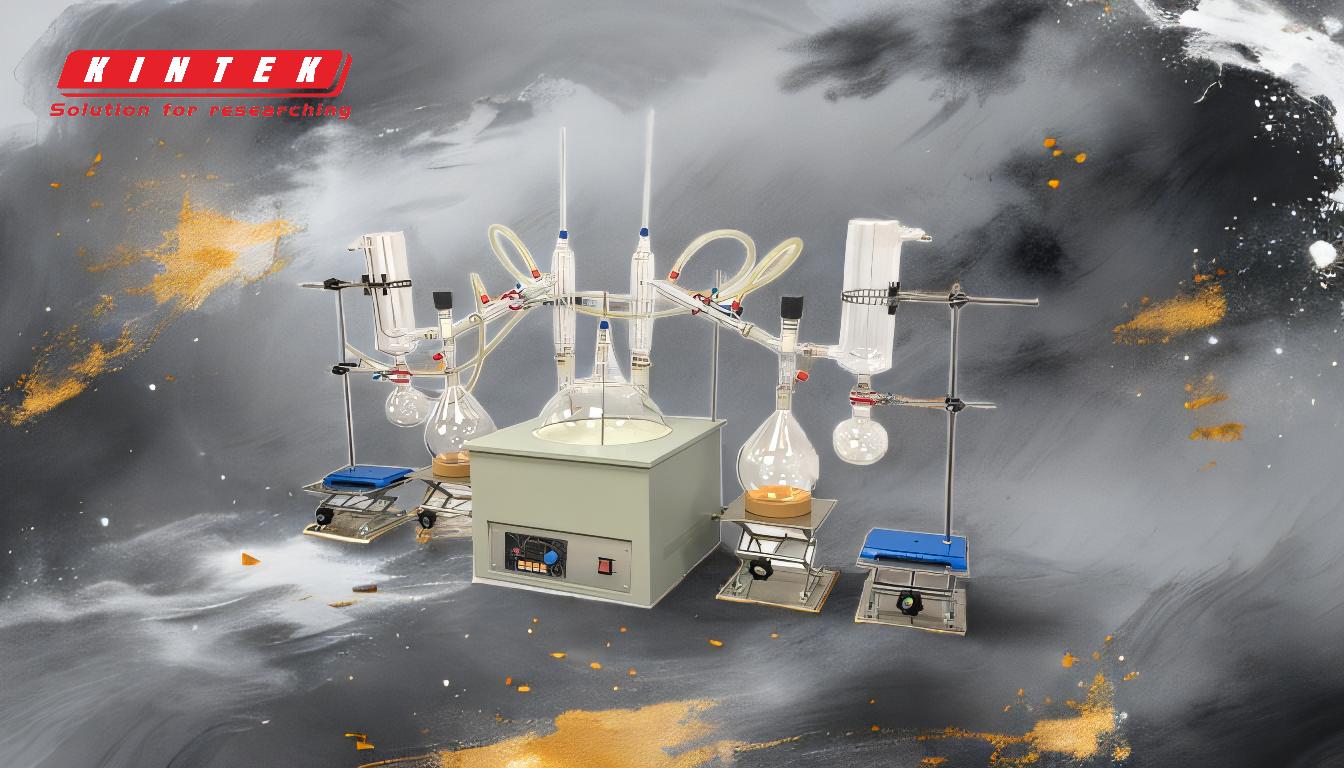Distillation is a fundamental separation technique used to purify or separate components of a liquid mixture based on their differing boiling points. The process involves four key steps: molecular diffusion to the evaporation surface, molecular free evaporation, transfer of vapor molecules to the condensing surface, and condensation of the vapor back into liquid form. These steps ensure the effective separation of volatile components from a mixture, making distillation a critical process in industries such as chemistry, pharmaceuticals, and petroleum refining.
Key Points Explained:

-
Molecular Diffusion to the Evaporation Surface
- Definition: This is the first step where molecules of the liquid mixture move from the bulk of the liquid phase toward the surface where evaporation occurs.
- Mechanism: The movement is driven by concentration gradients, where molecules naturally travel from areas of higher concentration to areas of lower concentration.
- Importance: This step ensures that the liquid mixture is evenly distributed and that the components with lower boiling points reach the surface for evaporation.
- Practical Considerations: Factors such as temperature, viscosity, and agitation can influence the rate of diffusion. For example, heating the mixture increases molecular movement, speeding up diffusion.
-
Molecular Free Evaporation from the Liquid Surface
- Definition: Once the molecules reach the surface, they transition from the liquid phase to the gas phase through evaporation.
- Mechanism: This step relies on the energy provided by heat, which allows molecules with sufficient kinetic energy to escape the liquid phase.
- Importance: The selective evaporation of components with lower boiling points ensures that the desired component is separated from the mixture.
- Practical Considerations: The rate of evaporation depends on the temperature and the surface area of the liquid. Increasing the heat or exposing more surface area can enhance evaporation.
-
Transfer of Vapor Molecules to the Condensing Surface
- Definition: The vaporized molecules travel from the evaporation surface to a cooler surface where condensation will occur.
- Mechanism: This step involves the movement of gas-phase molecules through the distillation apparatus, often facilitated by a temperature gradient.
- Importance: Proper transfer ensures that the vaporized component is efficiently directed toward the condensing surface without re-mixing with the original liquid.
- Practical Considerations: The design of the distillation apparatus, such as the length and insulation of the connecting tube, plays a crucial role in minimizing heat loss and ensuring smooth vapor transfer.
-
Condensation of Vapor Molecules on the Condensing Surface
- Definition: The final step involves cooling the vapor so that it returns to the liquid phase and is collected.
- Mechanism: The vapor molecules lose energy upon contact with the cooler surface, causing them to transition back into the liquid phase.
- Importance: This step completes the separation process, yielding a purified or concentrated liquid component.
- Practical Considerations: The efficiency of condensation depends on the temperature difference between the vapor and the condensing surface. Using a cooling medium, such as water or air, ensures effective condensation.
By following these four steps, distillation achieves the separation of components in a mixture based on their boiling points. Each step is interdependent, and optimizing the conditions for each stage ensures the overall efficiency and effectiveness of the distillation process.
Summary Table:
| Step | Definition | Mechanism | Importance | Practical Considerations |
|---|---|---|---|---|
| Molecular Diffusion to Evaporation Surface | Molecules move from the bulk liquid to the surface for evaporation. | Driven by concentration gradients. | Ensures even distribution and separation of lower boiling point components. | Influenced by temperature, viscosity, and agitation. |
| Molecular Free Evaporation | Molecules transition from liquid to gas phase at the surface. | Heat provides energy for molecules to escape the liquid phase. | Selectively separates components with lower boiling points. | Depends on temperature and surface area. |
| Transfer of Vapor Molecules | Vapor travels from the evaporation surface to the condensing surface. | Movement facilitated by temperature gradients in the apparatus. | Ensures vapor is directed to the condensing surface without re-mixing. | Apparatus design (e.g., tube length, insulation) minimizes heat loss. |
| Condensation of Vapor Molecules | Vapor is cooled and returns to liquid form on the condensing surface. | Vapor loses energy upon contact with a cooler surface, transitioning to liquid. | Completes separation, yielding purified or concentrated liquid. | Efficiency depends on temperature difference and cooling medium (e.g., water, air). |
Need help optimizing your distillation process? Contact our experts today for tailored solutions!











